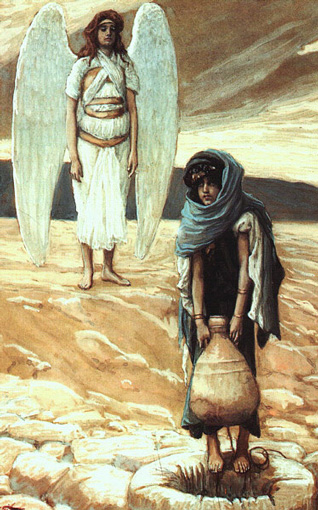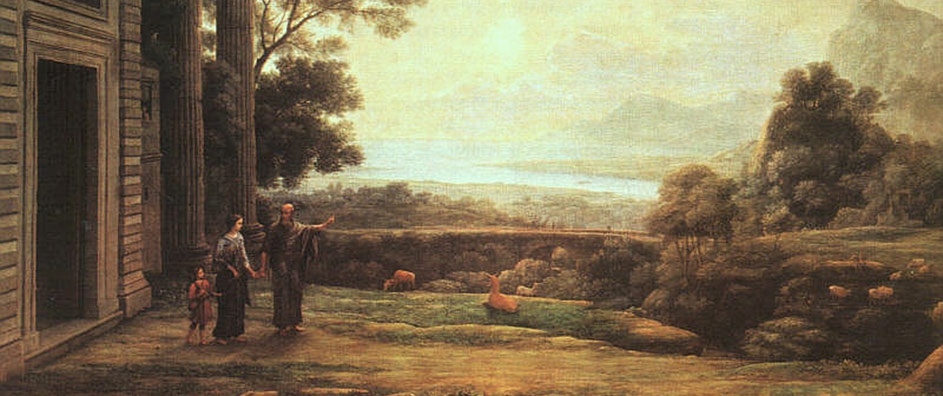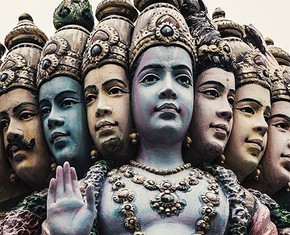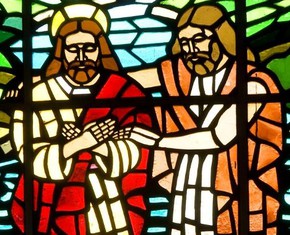The views expressed in our content reflect individual perspectives and do not represent the authoritative views of the Baha'i Faith.
Whatever the mystical truth of the matter, the result of the disagreement between Abraham’s wives as witnessed in the Old Testament is that Hagar runs away.
She turned to the south and began following a path across the wilderness—the Negev desert and the Sinai Peninsula—separating her from her native land of Egypt. Considered physically, Hagar did what many young women do in difficult circumstances; she runs home to mama. Considered mystically and symbolically, Hagar abandoned monotheism and returned to the polytheistic faith she knew as a child. Or, using the symbolism about Egypt contained in Lot’s story, Hagar headed to a place that has been well-watered–but has resisted accepting a new revelation from God.
In the wilderness, Hagar sat down to rest near a gushing spring of water. While she rests, a visitor approaches and gives her a message that will change her life:
And the angel of the lord found her by a fountain of water in the wilderness . . . And he said, Hagar, Sarai’s maid, whence camest thou? and whither wilt thou go? And she said, I flee from the face of my mistress Sarai. And the angel of the lord said unto her, return to thy mistress, and submit thyself under her hands. – Genesis 16:7-9.

Hagar and the Angel in the Desert by James Tissot (1900)
This astonishing event firmly establishes Hagar’s importance. It is the very first appearance of an angel in the Bible, and one of only four occurrences of an angel speaking with a woman. After visiting Hagar, hundreds of years will pass before a second visit to a woman, when the honor will go to the mother of Samson. The third appearance will be to Mary, the mother of Jesus. The fourth Biblical appearance is not to a single woman but to a group of them, including Mary Magdalene, who enter the cave where Jesus’ body is entombed. That’s it.
In visualizing Hagar’s angel, it would be viscerally satisfying to sketch an outline of the unearthly creature on a piece of paper, but a thorough reading of scripture frustrates any such attempt. The characteristics assigned to these extraterrestrial beings are too contradictory to be captured by pen, pencil, or brush. Angels are creatures fashioned of fire, yet they are also flying seraphim with six wings as well as awesome apparitions with faces like lightning. They occasionally have the features of a man, are sometimes dressed in dazzling robes, and at least one model comes complete with feet that gleam like burnished bronze. No two, it would seem, are alike.
Furthermore, an angel is not created from earthly clay. It is, as both the Old and New Testaments subtly but surely point out, an ethereal “vision” that one cannot see or appreciate without experiencing a spiritual awakening that has “opened the eyes.”
The Baha’i writings describe angels as symbols of “the confirmations of God and His celestial powers.” The word is also used to refer to people who have become so spiritual that they have:
…severed all ties with this nether world, have been released from the chains of self and the desires of the flesh, and anchored their hearts to the heavenly realms of the Lord. – Abdu’l-Baha, Selections from the Writings of Abdu’l-Baha, p. 81.
These words suggest that angelic images are used in sacred scripture as a means of imparting heavenly truths, revealing glimpses of the future, or vivifying otherwise inexplicable mystical experiences. One should not, therefore, take them literally, or expect to capture the fluttering of an angel’s wing on even the most sophisticated of cameras.
When the angel visits Hagar, she encounters spiritual truth in a form too powerful for her to deny. She understands her responsibility and realizes that Egypt is not her destiny. She will have to return to the tent of Abraham and Sarah: “And the angel of the lord said unto her, return to thy mistress, and submit thyself under her hands.” Enthralled by the angelic voice, Hagar realizes she will have a boy whose name will reflect the fact that God has heard and understood her troubles:
And the angel of the lord said to her, Behold, you are with child and shall bear a son, and shall call his name Ishmael; because the Lord has heard your affliction. – Genesis 16:11.
Ishmael, in translation, means God hears.
















Comments
Sign in or create an account
Continue with Googleor